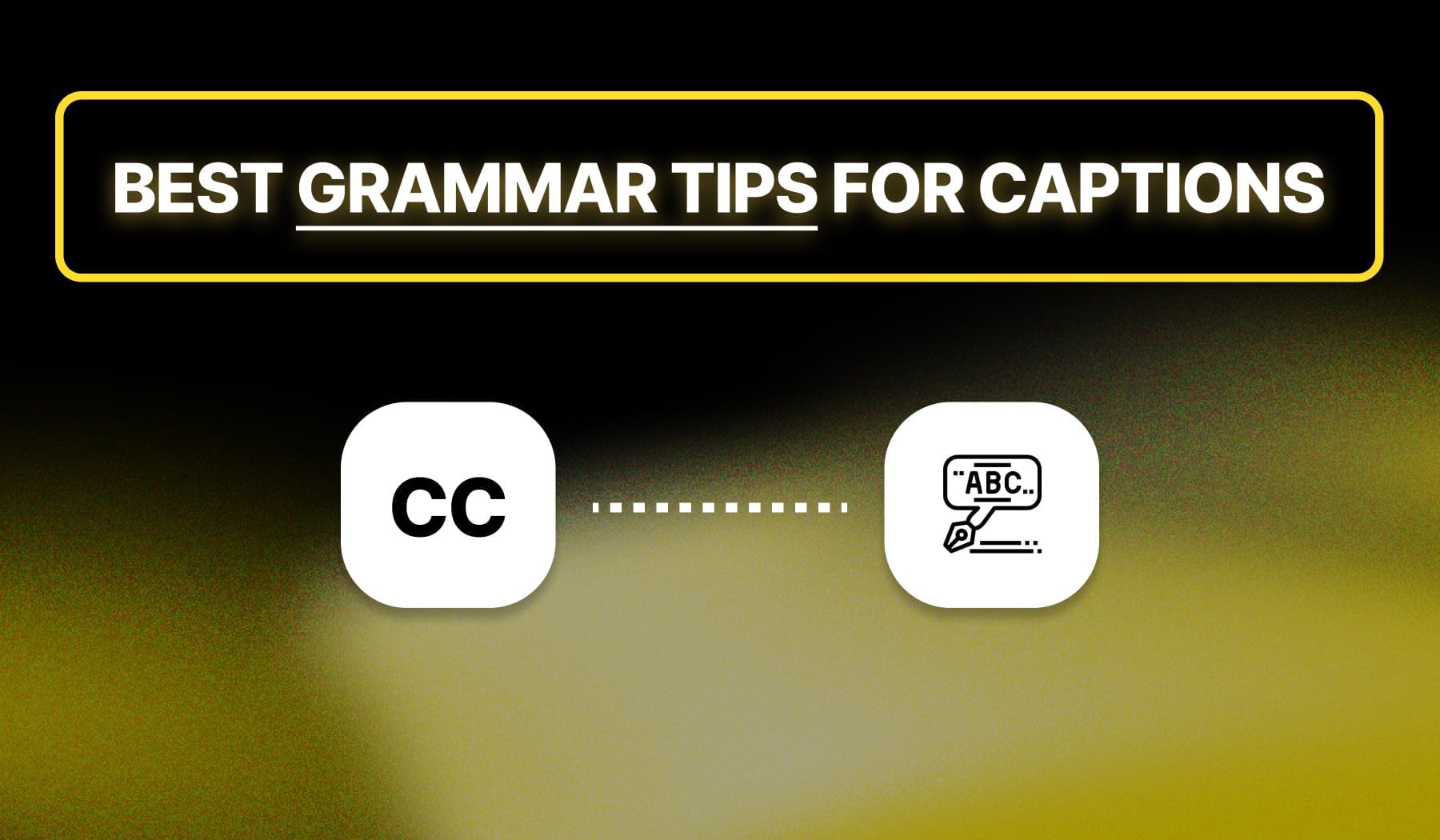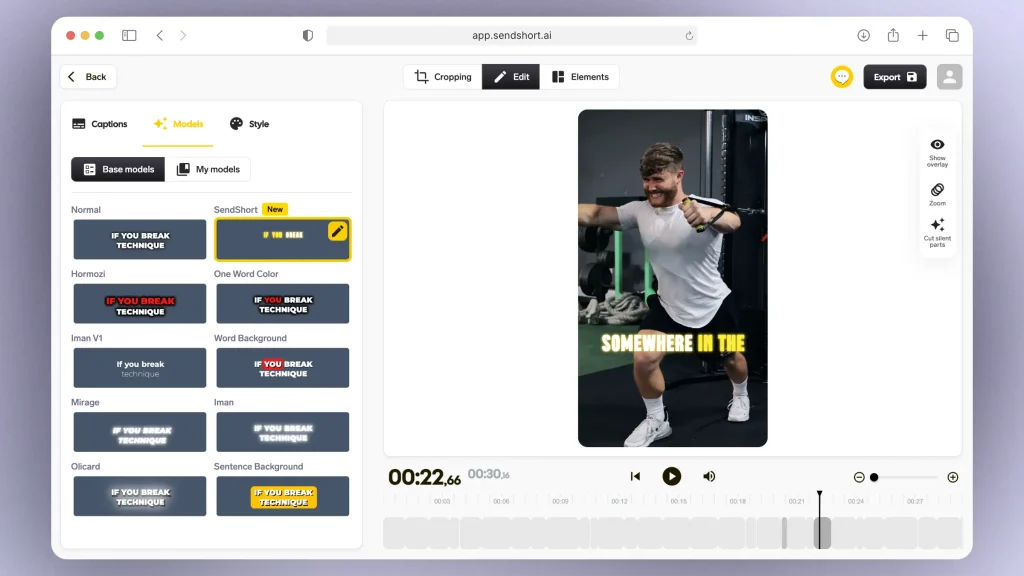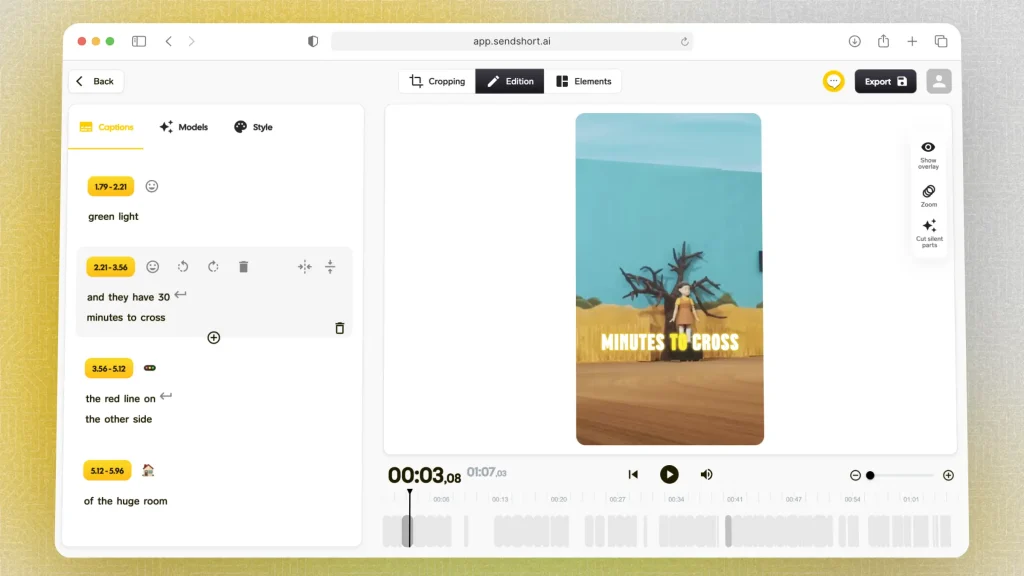
Grammar Practices for Captioning

Captions play a crucial role in enhancing the accessibility and engagement of your video content. As more viewers consume videos without sound, well-crafted captions can significantly improve comprehension and retention. This guide outlines essential grammar practices for creating clear and professional video captions.
By implementing these practices, you can ensure that your captions not only convey the intended message effectively but also enhance the overall viewing experience for a diverse audience. Whether you’re creating content for social media, educational platforms, or marketing, mastering the art of captioning will elevate your video quality and reach.
10 Best Grammar Practices for Video Captioning
Captions are essential for making videos accessible and engaging. So, here are key grammar practices to ensure your video captions are clear, professional, and easy to read.
1. Use Proper Punctuation
Always end sentences with appropriate punctuation marks, such as periods, question marks, or exclamation points.
This practice helps convey the tone and intention of the spoken content. Proper punctuation not only aids comprehension but also adds professionalism to your captions.
2. Capitalize Correctly
Capitalize the first word of each sentence and any proper nouns. Consistent capitalization enhances readability and professionalism.
For instance, when referencing names, places, or titles, make sure they are correctly formatted to avoid confusion.
3. Maintain Consistent Formatting
Use consistent formatting for speaker labels, time stamps, and any additional elements. This includes font size, color, and style, which ensures a cohesive look throughout the video. Consistent formatting makes it easier for viewers to follow along.

4. Keep Sentences Concise
Break longer sentences into shorter, manageable ones. Concise sentences are easier to read and understand, especially for viewers reading at a glance.
This approach also helps emphasize key points without overwhelming the audience.
5. Use Clear Language
Avoid jargon, idioms, or complex language that may confuse viewers. Opt for simple, straightforward vocabulary to ensure comprehension across diverse audiences. Clear language helps to engage viewers effectively and keeps them focused on the content.
6. Align Captions with Audio
Time your captions accurately to match the audio. Ensure captions appear on-screen when the corresponding dialogue is spoken, giving viewers enough time to read them.

Proper alignment enhances the viewing experience and keeps the audience engaged.
7. Avoid Overuse of Abbreviations
Use abbreviations sparingly and only when they are commonly understood. If necessary, spell out the term the first time it’s used, followed by the abbreviation in parentheses.
This practice ensures that all viewers can follow the content without confusion.
8. Review for Spelling and Grammar Errors
Always proofread your captions for spelling and grammatical errors. Mistakes can distract viewers and diminish the credibility of your content. A careful review can make a significant difference in the professionalism of your video.
9. Include Speaker Identification
When multiple speakers are present, clearly identify who is speaking by including their name or label at the beginning of their dialogue. This helps viewers follow the conversation more easily and enhances their understanding of the content.
10. Consider Accessibility
Use clear language and avoid overly complex structures to ensure captions are accessible to all viewers, including those with hearing impairments or language barriers. Accessibility is crucial for engaging a wider audience and promoting inclusivity.
By following these grammar practices, you can create effective and professional captions that enhance viewer experience and ensure your videos are accessible to a wider audience. Properly captioned videos not only improve engagement but also boost your content’s reach and impact.
Questions & Answers
1. What are the grammar rules for captioning?
Here are the key grammar rules for captioning:
- Clarity: Use clear and concise language.
- Punctuation: Use standard punctuation for clarity (e.g., periods, commas).
- Capitalization: Capitalize the first word of each caption and proper nouns.
- Sentence Structure: Use complete sentences when possible.
- Timing: Sync captions with dialogue; display for enough time to read.
- Spelling: Ensure correct spelling for professionalism.
2. Should you correct grammar in subtitles?
Yes, you should correct grammar in subtitles for several reasons:
- Clarity: Proper grammar helps convey the message accurately and clearly.
- Professionalism: Well-edited subtitles enhance the overall quality of the content.
- Readability: Correct grammar makes subtitles easier to read and understand.
- Consistency: Maintaining grammatical rules creates a consistent viewing experience.
However, if the original dialogue contains intentional grammatical errors (e.g., character speech patterns), it might be appropriate to reflect those accurately in the subtitles.
3. Do captions need to be grammatically correct?
Captions should generally be grammatically correct to ensure clarity and professionalism. However, there are some considerations:
- Clarity: Correct grammar helps convey the message accurately.
- Context: If the dialogue includes informal speech or intentional errors (like slang or character quirks), it’s acceptable to reflect that in the captions.
- Readability: Proper grammar enhances readability, especially for viewers who rely on captions for understanding.
In summary, while grammatical accuracy is important, context matters in determining how strictly to apply these rules.
Thanks a lot for reading this,
David Ch
Head of the Editing Team at SendShort







